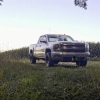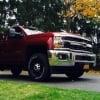Towing vehicle(tow truck) With single speed transfer case
-
Similar Content
-
- 1 reply
- 296 views
-
transfer case 2015 GMC Sierra NQH transfer case stuck in neutral.
By Detroit Diesel,
- transfercase
- Nqh
- (and 7 more)
- 1 answer
- 1,303 views
-
- 2 replies
- 1,338 views
-
- 3 replies
- 1,570 views
-
- 3 replies
- 3,507 views
-
-
Recently Browsing 0 members
- No registered users viewing this page.
-
Forum Statistics
247.7k
Total Topics2.6m
Total Posts -
Member Statistics
-
Who's Online 2 Members, 0 Anonymous, 805 Guests (See full list)


















Recommended Posts
Join the conversation
You can post now and register later. If you have an account, sign in now to post with your account.